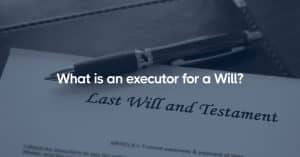Probate, the court-supervised legal process that unfolds upon your death if you do not have a defensible living trust in place, is often a complex, lengthy, and expensive journey. It’s a procedure that can span anywhere from 9 to 18 months and potentially siphon off up to 10% of the total value of your estate in court fees and attorney costs.
When a person passes away without a legally defensible living trust, their estate must go through probate. This process is necessary to identify and distribute the deceased’s assets in accordance with their will – or, if they died intestate (without a will), according to state law.
During probate, a court determines several key elements:
- Who the heirs or beneficiaries are: The court identifies individuals who are entitled to receive a portion of the deceased’s assets. This can involve locating and notifying relatives and determining their legal entitlement to the estate.
- The nature and value of the deceased’s assets: The court oversees the assessment and inventory of the deceased’s property, including real estate, investments, cash, and other assets.
- The financial responsibilities of the deceased: The probate process also involves settling the deceased’s financial obligations, which can include paying debts and taxes, selling property, and transferring assets as necessary.
Remarkably, it’s estimated that Americans lose around $3 billion to probate fees each year, with a substantial portion of this sum going directly to attorney fees. But there’s a beacon of light in this potentially costly scenario: the creation of a living trust.
A living trust is a legal entity created to hold ownership of an individual’s assets. This tool allows the assets within the trust to bypass probate, providing a smoother and faster transition process upon the death of the trust maker.
Living trusts involve specific instructions for your estate and appoint a successor trustee – a person or institution you trust to manage the assets in your trust. When you pass away, your designated successor trustee will carry out the instructions in your trust, distributing your assets to the beneficiaries you’ve chosen.
The primary advantage of this arrangement is that your estate can be transferred to your beneficiaries without the need for court intervention. This approach often saves significant time and money, avoids the public nature of probate, and allows for a seamless management of your affairs if you become incapacitated.
Creating a defensible living trust isn’t just about ensuring your assets are distributed according to your wishes. It’s also about protecting the value of your estate, minimizing legal fees, and eliminating the need for a drawn-out, often stressful probate process. This smart and proactive step can offer peace of mind, knowing that your loved ones will be spared unnecessary hassles and costs after your passing.



